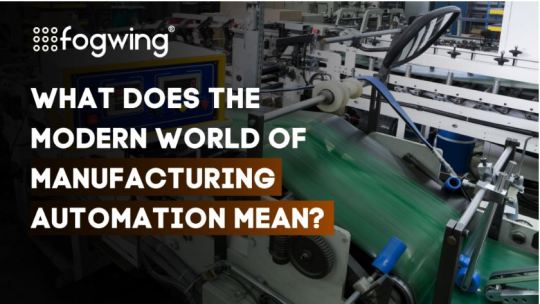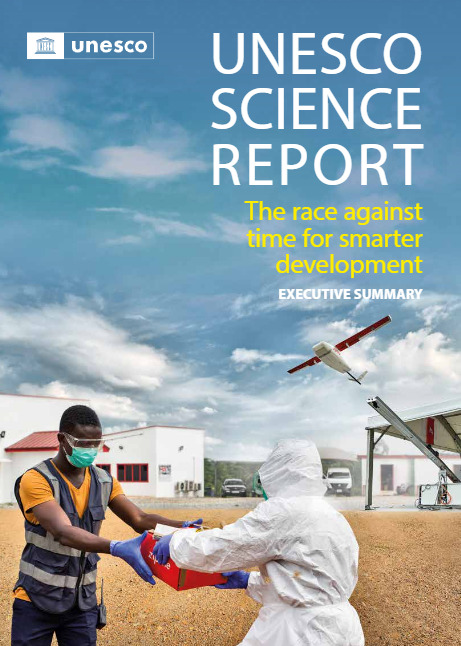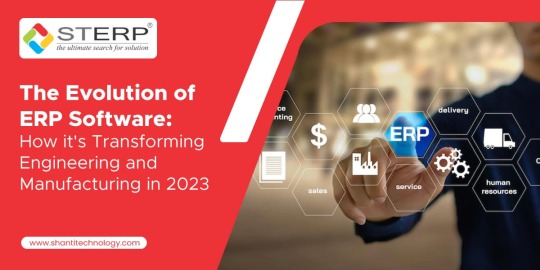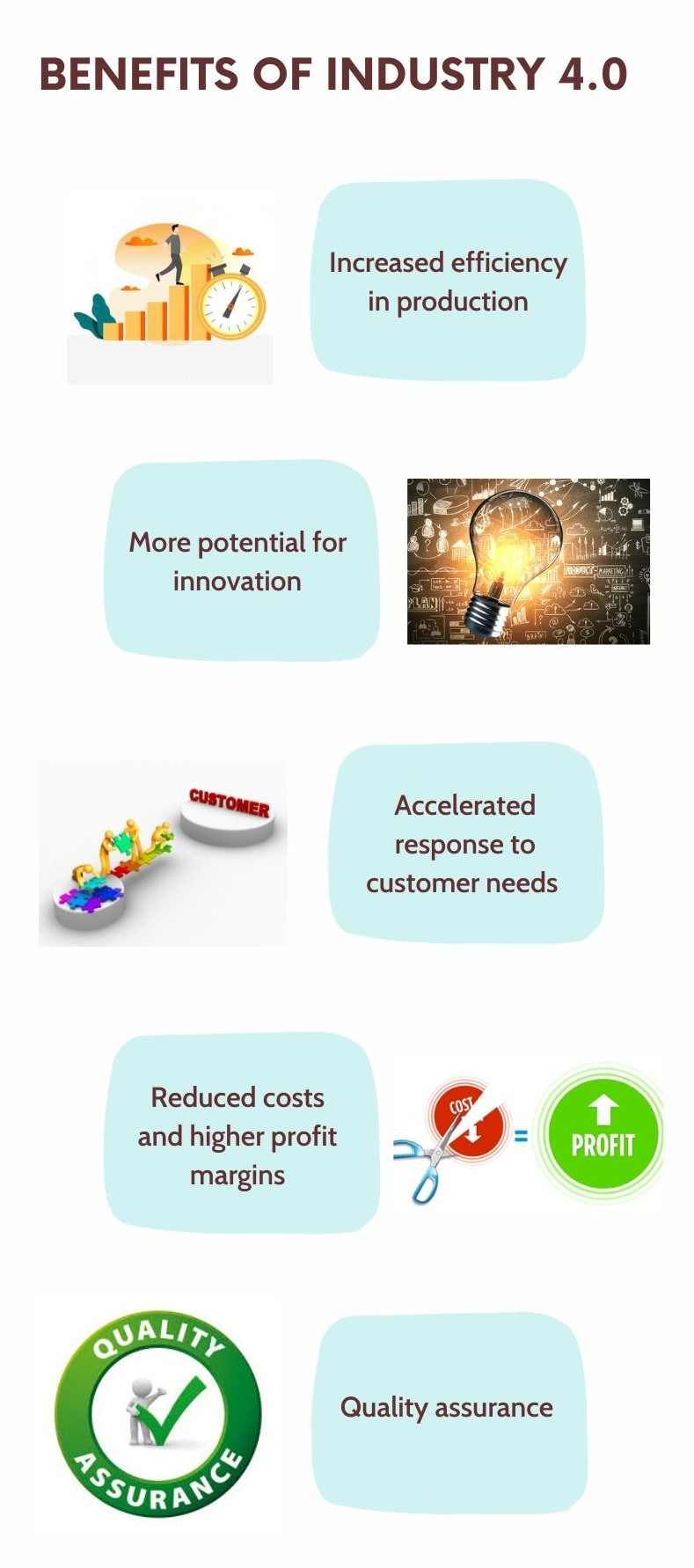#industry 4.0 revolution
Text

Technologies driving Industry 4.0
#revolution industry#industry 4.0 revolution#industry fourth revolution#fourth industrial revolution#industry 4.0#industry 4.0 in manufacturing
3 notes
·
View notes
Text
What does the Modern World of Manufacturing Automation mean?

Evolving ways of life from generation to generation has caused the world to be dynamic. Technology has impacted this dynamic world significantly. Development in technology has served to become the foundation of adapting automation and virtual engagements over the years. Manufacturing is one of the major sectors that is continuing to benefit from advanced technology to meet the needs of global markets.
It is crucial to define and learn about the Modern World and Manufacturing Automation to understand the relation between the two domains. Therefore, two questions are to be briefly answered.
How is the Modern World perceived?
What is Manufacturing Automation?
How is the Modern World perceived?
The modern world is often identified with sophistication in accomplishing tasks/jobs/projects / assignments or any work in general. Additionally, the Modern world is characterized by an era defining event/invention that has marked the sturdy transformation from the legendary to the new. Emerging technology and the progress in innovation occupies the position of an era defining event / invention. Therefore, the modern world can be perceived as a phase that has witnessed and benefitted from technological advancements.
What is Manufacturing Automation?
The use of equipment to automate production processes or systems is identified as manufacturing automation. The end goal of manufacturing automation is to enhance industry operations efficiency by increasing production capacity, reducing cost and achieving orderly factory maintenance with decreased unplanned downtime.
Manufacturing automation has become more associated with the use of machines to reduce manual work. Electromechanical systems programmed to perform manufacturing processes are recognized to serve automation in manufacturing.
Read More at : https://www.fogwing.io/blog/modern-world-of-manufacturing-automation/
#Smart Manufacturing Industry#Manufacturing Automation#Energy Efficiency#Smart Manufacturing#Industrial Revolution 4.0#Pressure Sensor#Smart Sensor#Vision Sensor System#Industrial Automation Magazine#Smart Factory Automation#Smart Manufacturing Industry 4.0#Smart Sensors For Industrial Applications#technology#industrial iot#internet of things
3 notes
·
View notes
Text
You might have heard of the Fourth Industrial Revolution, or Industry 4.0, which brought a wave of technology and automation into our factories and daily lives. But hold onto your hats because there’s something new on the horizon: Industry 5.0. Moreover, it’s like the next level of the game, building upon what Industry 4.0 started. Thus, the world is talking about Industry 5.0, and it’s time to dive deep to understand the impact it will have.
#Industry 5.0#Fourth Industrial Revolution#Industry 4.0#future as Industry 5.0#advanced tech#Collaboration of Technology and Human Synergy#technologies
1 note
·
View note
Text
What is Industrial Revolution 4.0 in Education - GIIS Kuala Lumpur
Read our blog to know about the industrial revolution 4.0, its impact on education, and its benefits for students and teachers.
0 notes
Text
UNESCO Science Report: the race against time for smarter development.

The world is engaged in a race against time to rethink development models by 2030, the deadline for reaching the United Nations' 17 Sustainable Development Goals (SDGs). The UNESCO Science Report’s subtitle, ‘the race against time for smarter development’, captures this urgency. Since 2015, most countries have aligned their national policies with The 2030 Agenda for Sustainable Developmentand are engaged in a gradual transition to ‘green’ economies. Governments are stepping up support for smarter production and consumption systems. As the cost–benefit ratio of renewable energy rises, ‘green’ energy projects have multiplied. However, many governments still fret about how to reconcile the preservation of markets and jobs with their commitment to the Paris Agreement (2015). Despite the growing impact of climate change, there is still insufficient support on the part of both governments and businesses for the necessary energy transition: over 80% of global energy production was based on coal, oil and gas in 2018. In parallel to their green transition, governments are digitalizing public services and payment systems to improve service delivery, support business and combat corruption and tax evasion. Policies are fostering the emergence of a digital economy, including smart manufacturing, smart finance (fintech), smart health care services like telemedicine and smart agriculture. The report’s subtitle is also an allusion to this form of ‘smarter development’ driven by digital technologies such as artificial intelligence (AI) and robotics, big data, the Internet of Things and blockchain technology which are converging with nanotechnology, biotechnology and cognitive sciences to form the bedrock of the Fourth Industrial Revolution (also known as Industry 4.0).
Countries of all income levels are engaged in this dual green and digital transition. Science has become synonymous with modernity and economic competitiveness, even with prestige. For those countries bearing the brunt of climate change, science offers hope of greater resilience to destructive storms, fires, droughts and other calamities. However, businesses are not always supporting this agenda, either for lack of motivation or capacity; many continue to import packaged technologies, rather than develop their own. They are often reluctant to collaborate with public research institutions.
#UNESCO#Digital sciences#Biotechnology#cognitive science#nanotechnology#Fourth Indistrial Revolution#industry 4.0
0 notes
Text
5G to drive economic growth, job creation in the Philippines
5G is a must-have platform for the shift to Industry 4.0 or the ‘4th Industrial Revolution’ (4IR) with its faster, and more reliable Internet connectivity.
#5G
@enjoyGLOBE
Globe continues to expand the availability of its 5G technology nationwide as it expects the next generation of wireless internet connectivity to boost Philippine economic growth and recovery, as well as the country’s transition towards ‘Industry 4.0’.
5G to drive economic growth, job creation in the Philippines
With its faster speeds, lower latency, higher bandwidth, and more reliable internet…

View On WordPress
#4th Industrial Revolution#4th Industry Revolution#5G technology#BPO#Business Process Outsourcing#economic growth#Globe Telecom#Industry 4.0#information technology-based business process outsourcing#Philippine economy#Philippines
0 notes
Link
What is Industry 4.0—the Industrial Internet of Things (IIoT)?
Industry 4.0 is also referred to as the fourth industrial revolution. The manufacturing industry is integrating new technologies, including the Internet of Things (IoT), analytics, artificial intelligence, and machine learning, into production facilities and operations. With the help of Industry 4.0 concepts, you can change business processes, industries, and technologies. If you want to learn how the Industrial Internet of Things is revolutionizing your business. visit our latest blog now: https://www.epicor.com/en-us/blog/learn/what-is-industry-4-0
0 notes
Text
The Evolution of ERP Software: How it is Transforming Engineering and Manufacturing in 2023
In today’s dynamic world of engineering and manufacturing industry, maintaining competitiveness and operational efficiency is of paramount importance. Enterprise Resource Planning (ERP) software has become a fundamental tool for optimising processes, improving efficiency, and facilitating smooth operations in the engineering and manufacturing industries. As we progress into the year 2023, it becomes apparent that enterprise resource planning (ERP) software has experienced a substantial transformation, adapting to the unique requirements of the industry in question. Unlock the full potential of your manufacturing company with ERP software designed and developed by STERP (Shanti Technology). Contact today for a tailored ERP solution for manufacturing company in India that aligns perfectly with your business objectives.

This blog article aims to examine the growth of Enterprise Resource Planning (ERP) software and its significant impact on the fields of engineering and manufacturing.
Historical Perspective: A Brief Overview of ERP Software
The evolution of ERP software since its establishment in the 1960s has been significant, with a notable shift from its initial emphasis on inventory management and order processing. Over the course of several decades, enterprise resource planning (ERP) systems have seen significant growth and development, resulting in the integration of a wide range of corporate functions. These functions include but are not limited to accounting, human resources, procurement, and other related operations. The advancement of technology has led to the evolution of ERP software into a centralised platform that offers real-time data, enhances decision-making processes, and fosters communication across various departments within an organisation.
· Integration of IoT and Industry 4.0:
The combination of the Internet of Things (IoT) and Industry 4.0 technologies represents a notable revolution in ERP software during the year 2023. The Internet of Things (IoT) facilitates the interconnection of various devices and sensors, enabling the collection and sharing of data. This capability offers real-time insights into the industrial process. Enterprise Resource Planning (ERP) systems have the capability to effectively integrate this data, so facilitating manufacturers in making informed decisions based on data analysis and enhancing their operational efficiency.
The principles of Industry 4.0 place significant emphasis on the integration of automation, digitization, and connectivity, which have now been easily included in enterprise resource planning (ERP) software. The integration described enables enterprises to establish a smart industrial setting, increase their control of the supply chain, and optimise operational efficiency.
· Cloud-Based ERP Solutions:
Cloud-based enterprise resource planning (ERP) solutions have significantly transformed the operational landscape of enterprises. This paradigm shift can be attributed to the revolutionary impact of cloud technology on ERP software. In the year 2023, an increasing number of engineering and manufacturing companies are using cloud-based Enterprise Resource Planning (ERP) solutions. The aforementioned solutions possess several benefits, including the ability to scale, adaptability, reduced initial expenses, and convenient availability, rendering them exceedingly appealing to organisations of all sizes. Moreover, the utilisation of cloud-based enterprise resource planning (ERP) systems facilitates the instantaneous exchange of data and promotes collaboration among all parties involved, hence enhancing operational efficiency and cultivating a culture of innovation. Invest in the future of manufacturing. Choose advanced ERP software for engineering companies in India developed by STERP (Shanti Technology) to enhance agility and competitiveness.
· Advanced Analytics and Business Intelligence:
In the current business environment, data holds significant value. Enterprise Resource Planning (ERP) software has evolved to incorporate sophisticated analytics and business intelligence functionalities, enabling the generation of visually appealing data representations and the utilisation of predictive analytics techniques. Manufacturers have the ability to utilise this data in order to anticipate market trends, enhance production schedules, effectively manage inventories, and rapidly make well-informed business decisions. The utilisation of advanced analytics enables engineering and manufacturing enterprises to maintain flexibility and effectively respond to market fluctuations in a timely manner.
· Enhanced User Experience and Mobility:
The optimisation of user experience and mobility is a crucial element in contemporary enterprise resource planning (ERP) systems. In the year 2023, the primary emphasis of ERP software lies in delivering an intuitive and user-friendly interface, with the aim of facilitating smooth adoption and utilisation throughout all hierarchical levels within the organisation. Furthermore, the use of mobility enables stakeholders to conveniently access essential data and capabilities while on the move, hence enhancing productivity and facilitating informed decision-making. Stay ahead in the competitive manufacturing landscape. Reach out to an expert - STERP (Shanti Technology) - the most reliable Engineering ERP Software Company in India and elevate your business operations.
· Cybersecurity and Compliance:
The increasing prevalence of cyber risks has prompted ERP software developers to prioritise the integration of robust cybersecurity capabilities. In the year 2023, enterprise resource planning (ERP) systems place significant emphasis on the paramount importance of data security, adherence to industry laws, and the implementation of effective authentication procedures. This practice guarantees the preservation of confidential corporate information, hence cultivating a sense of trust and assurance among users.
Final Thoughts:
The evolutionary progression of Enterprise Resource Planning (ERP) software in the year 2023 signifies a significant and transformational change within the realm of engineering and manufacturing. The convergence of the Internet of Things (IoT), Industry 4.0 technologies, cloud-based solutions, sophisticated analytics, improved user experience, and heightened cybersecurity measures enables organisations to effectively streamline operations, boost efficiency, and attain long-term, environmentally conscious expansion. With the increasing use of these technological developments, the engineering and manufacturing sectors are poised to witness unparalleled levels of efficiency and creativity, hence setting a bright trajectory for the industry.
In order to remain competitive in today's ever-changing corporate landscape, it is imperative to be informed and capitalise on the capabilities of enterprise resource planning (ERP) software. Ready to streamline your manufacturing operations? Contact STERP (Shanti Technology) a renowned company offering manufacturing ERP software in India and see how it can simplify processes, boost efficiency, and drive profitability.
#ERP for manufacturing company in India#ERP software for engineering companies in India#Engineering ERP Software Company in India#Manufacturing ERP software in India#ERP India#Business Solutions#ERP software#Manufacturing#Engineering#business#shantitechnology#STERP
9 notes
·
View notes
Text
How are startups disrupting traditional industries?
Startups are often at the forefront of disrupting traditional industries by introducing innovative technologies, business models, and approaches. Here are several ways in which startups are causing disruption:
1. Technology Integration
- Startups leverage emerging technologies such as artificial intelligence, blockchain, and the Internet of Things to create more efficient and streamlined processes in industries like finance, healthcare, and manufacturing.
2. E-Commerce and Direct-to-Consumer Models
- E-commerce startups have revolutionized retail by providing direct-to-consumer sales channels, cutting out intermediaries and reducing costs. Companies like Amazon and Alibaba have transformed the way people shop.
3. Sharing Economy
- Startups in the sharing economy, like Uber and Airbnb, have disrupted transportation and hospitality industries by connecting service providers directly with consumers through online platforms.
4. Fintech Innovation
- Fintech startups have transformed the financial services sector by introducing digital payments, robo-advisors, crowdfunding platforms, and blockchain-based solutions, challenging traditional banking models.
5. HealthTech Advancements
- Health technology startups are disrupting healthcare by introducing telemedicine, personalized medicine, wearable devices, and digital health platforms, making healthcare more accessible and efficient.
6. Renewable Energy and CleanTech
- Startups in the clean energy sector are disrupting traditional energy industries by developing innovative solutions for renewable energy, energy storage, and sustainable practices.
7. EdTech Revolution
- Education technology startups are changing the way people learn by offering online courses, interactive platforms, and personalized learning experiences, challenging traditional educational institutions.
8. AgTech and FoodTech
- Agricultural technology startups are improving efficiency and sustainability in farming, while food technology startups are introducing alternative proteins, lab-grown meat, and sustainable food production methods.
9. InsurTech Transformation
- InsurTech startups are leveraging technology to streamline and personalize insurance processes, making insurance more accessible, affordable, and customer-centric.
10. Space Exploration and Aerospace Innovation
- Startups in the space industry are disrupting aerospace by developing cost-effective satellite technologies, commercial space travel, and new approaches to space exploration.
11. Smart Manufacturing
- Startups in the manufacturing sector are implementing Industry 4.0 technologies, such as automation, IoT, and data analytics, to create more agile and efficient production processes.
12. Telecommunications Disruption
- Telecom startups are challenging traditional telecommunications companies by providing innovative solutions for connectivity, communication, and data transfer.
These examples showcase how startups are challenging the status quo across various industries, prompting established companies to adapt, innovate, or risk becoming obsolete. The agility, creativity, and willingness to take risks inherent in many startups enable them to drive significant changes in traditional business landscapes.
3 notes
·
View notes
Text
WIDMA's Proficiency in Hole Drilling and Horizontal Machining Centers: A Comprehensive Approach to Precision Machining
Offering state-of-the-art solutions for hole drilling and horizontal machining centers (HMCs), WIDMA stands out as a trailblazer in the fast-paced world of precision machining, where accuracy and innovation are paramount.
With a history stretching back to 1984, WIDMA has developed into a world leader in machine tool construction, offering unparalleled knowledge in machining operations.
Excellence in Hole Drilling Machines
WIDMA's selection of hole-drilling machines amply demonstrates its dedication to quality. With a focus on deep-hole drilling, WIDMA's equipment is designed to redefine efficiency and precision. The highly regarded gun drill machine, a symbol of technological advancement in the industry, is one of its flagship products.
Gun Drilling Machine: Accuracy Unlocked
A revolution in deep hole drilling is represented by WIDMA's gun drill machine. This machine is engineered to be incredibly accurate in drilling applications, with precision at its core. The gun drill machine from WIDMA is a dependable and high-performing solution for any industry that requires intricate hole drilling, be it automotive components, aerospace structures, or any other.
The following are the main attributes of WIDMA's gun drill machine:
1. Accuracy Redefined: The gun drill machine guarantees the highest level of precision in hole drilling applications by achieving tolerances that surpass industry standards.
2. Adaptability: The machine is versatile and can be designed for a variety of industries. It can work with a broad range of materials and component geometries.
3. Efficiency: WIDMA's gun drill machine optimizes the manufacturing process, increasing overall efficiency, with rapid drilling capabilities and minimal downtime.
4. Trustworthiness: Constructed with durable materials and cutting-edge engineering, the machine ensures dependability and longevity even in the most severe machining conditions.
Horizontal Machining Centre: Creating the Machining Landscape of the Future
Horizontal Machining Centers are essential in the context of Industry 4.0, which is redefining manufacturing landscapes through automation and connectivity. WIDMA's experience flows naturally into the field of HMCs, providing solutions that raise the bar for accuracy and efficiency.
Redefining Accuracy in Horizontal Machining
The horizontal machining centers from WIDMA are made to fit the changing needs of contemporary machining. These centers are excellent at everything from complex component manufacturing to high-precision milling.
The following characteristics set WIDMA's HMCs apart:
1. Adaptability: WIDMA's HMCs meet a wide range of machining needs, from small, complex parts to large-scale components.
2. Machining at High Speed: These machining centres redefine rapid machining with their engineering that balances speed and accuracy.
3. Automation Integration: WIDMA's HMCs easily interface with automation systems, improving workflow efficiency, in keeping with Industry 4.0 principles.
4. Reliability: Constructed with an emphasis on longevity and dependability, these machining centres guarantee steady performance even in the most exacting production settings.
WIDMA: Developing Precision Machining's Future
The precision of a gun drill machine or the adaptability of horizontal machining centers are just two examples of how WIDMA's solutions are more than just goods; they are a reflection of a history founded on knowledge and creativity.
WIDMA is synonymous with precision, reshaping the future of machining one drill at a time in a field where every cut counts.
2 notes
·
View notes
Text

#fourth industrial revolution#industry fourth revolution#industry 4.0 revolution#revolution industry#industry 4.0 in manufacturing#industry 4.0
0 notes
Text



Morning coffee to afternoon individual study session because I'll be having two tests this week, and one essay, one case solution submission. Next week would be one test, one essay deadline. I mean, what a life.
The morning class is interesting, heavily into the discussion with the lecturer over AI, Knowledge management, Industrial revolution 4.0 and Root-cause analysis.
#student#studyblr#studyinspo#studies#post grad life#chaotic academia#dark academia#iced coffee#post graduate#study motivation#study inspiration#study with me#screaming crying throwing up#business student#books and libraries#library
8 notes
·
View notes
Text
What Are Lawful Structures for Fintech in Vietnam?
What Are Lawful Structures for Fintech in Vietnam?
The foundation for the leap forward in all spheres of life has been established by the 4.0 industrial revolution and the explosion of the Internet. Science and technology have a direct impact on the financial sector, which is not exception.

Fintech – Financial Technology is a new type of finance that has emerged alongside traditional finance and has superior characteristics that are appropriate for the current circumstance and actual requirements. Despite the benefits of Fintech, its operation is fraught with difficulties, including legal issues.
Blockchain, big data, cloud computing, artificial intelligence, biometrics, and other technologies may be used by fintech. However, Vietnam currently lacks a comprehensive legal framework for these technologies. As a result, depending on the circumstances, laws pertaining to intellectual property, information technology, high technology, science and technology, cyberinformation security, and cybersecurity can all be enacted. In addition to ensuring the security of databases and the intellectual property that is associated with them, these regulations partially facilitate the research, development, and application of technological innovation.
Digital payment, in particular, is a big part of fintech. Non-cash payments, intermediary payment services, and the Law on Credit Institutions govern this sector. The Top state leader likewise gave Choice 316 since Walk 9, 2021, permitting the utilization of versatile cash to pay for labor and products of little worth. This is the legal basis for Fintech companies that offer digital payment services and for customers to use this method. Applications of fintech include asset management, peer-to-peer lending, and crypto currencies, all of which are not yet clearly regulated in Vietnam.
Due to the significance of establishing legal guidelines for Fintech, Official Dispatch No. 2433/VPCP-KTTH dated August 31, 2021 of the Public authority Office coordinated: “The State Bank of Vietnam chairs and coordinates with relevant agencies to continue studying and concretizing regulations on the pilot mechanism of P2P lending in the process of developing and finalizing the draft Decree on a controlled trial mechanism. Control (Regulatory Sandbox) financial technology activities in the banking sector, report to competent authorities for consideration and decision in accordance with the provisions of the Law on Promulgation of Legal Documents”.
Resolution No. was published by the government on September 6, 2021. 100/NQ-CP supporting the proposition to plan a Pronouncement on a system for controlled testing of Fintech exercises in the field of the financial area. After conducting research, the Draft Decree on the controlled trial mechanism for Fintech activities in the banking sector was published by the State Bank of Vietnam in April 2022. This draft is currently at the phase of looking for public remark and has not been endorsed. The development of the draft denotes another move toward Vietnam's lawful system for Fintech, establishing a strong starting point for the later birth of the Declaration.
The Decree on Controlled Trial Mechanism for Fintech in the banking sector will be officially issued by the government in the event that the Draft is approved. Credit institutions and financial technology companies will be able to test Fintech technology in a controlled manner as a result of this Decree. They can survey the adequacy and potential dangers while utilizing Fintech arrangements. The experiment's findings can be used to identify problems that need to be addressed in order for the legislature to pass legislation to regulate Fintech in the banking sector. If this is the case, banking will be a ground-breaking industry that will inspire Fintech regulations in other areas.
Despite the solid and quick improvement of web and its application, having a different lawful system for Fintech in Vietnam in the future is normal. Fintech lawyers in Vietnam who are interested in Fintech could also contribute by commenting on draft laws and providing clients with advice based on real-world examples. It goes without saying that the technology sector is home to some of the most successful businesses in the world. Fintech is the startup with the fastest growth rate among them. The sooner legitimate system of Fintech can be given, the better for Vietnam to gobble up amazing chances to draw in venture and find the world.
Our Fintech, banking legal counselors at Insect Legal Advisors - a law office in Vietnam will continuously circle back to the improvement of the legitimate system in Fintech in Vietnam to give updates to clients.
2 notes
·
View notes
Text
Summary of Customs Development Strategy from 2021 to 2030
In order to create favorable conditions for export and import to ensure state budget revenue and combat smuggling of banned and toxic goods, intellectual property infringement, counterfeiting of origin, affecting national security, contributing to national security create fairness and equality in business as well as modernize the Customs sector, the General Department of Customs has issued the Draft Customs development strategy for the period of 2021-2030 to gradually build Vietnam’s Customs in accordance with the new situation.

The Draft Decision on Customs development strategy for the period of 2021-2030 (the “Draft”) expect to ensure the management of the State and in compliance with international commitments which Vietnam is a member. Besides, the Draft also is expected to create favourable conditions for enterprises and flexibility in management towards modernization of the Customs in the new era.
The Draft aims at the overall goal of building a regular, modern force, on par with other countries in the region and the world, towards the development of a smart customs system, propose solutions to improve efficiency in the process of carrying out customs procedures and collecting taxes effectively to create convenience for passengers and businesses. At the same time, the Draft also aims to ensure maritime security, national competition and protect Vietnam’s interests and sovereignty.
In addition, the Draft sets out the main goals for the period 2021-2030 with the smart customs model continuing to be the key goal, built in a professional direction, minimizing administrative procedures and synchronization throughout the system, applying the achievements of the Industrial Revolution 4.0 and the cooperation and facilitation of the Customs of developed countries to realize the requirements of reform and modernization of state administration towards building a digital government, E-government. In addition, the prevention of smuggling activities is still a prerequisite goal to protect the business environment in Vietnam. Moreover, the goal is to reduce the human resource apparatus, improve the capacity and qualifications of the customs force to suit the needs of innovation in customs management technology.
The Draft sets a target that by 2025, Customs will strive to complete the redesign of the customs system in the direction of digital customs while ensuring information security; to ensure 90% of applications will be processed online, minimizing manual administrative procedures; to build a paperless, simple and effective working environment. Accordingly, the Draft is expected that 80% of inspection activities will be carried out through the digital environment, the information technology system of the General Department of Customs. Along with that, the Draft would improve the efficiency of the Customs Single Window to 100% for administrative procedures and integrate it on the National Public Service Portal for easy access and implementation by businesses and people; promote the signing of international treaties on customs to create favorable conditions for domestic enterprises as well as ensure the principle of benefits for all parties.
In order to achieve the above objectives, the General Department of Customs has proposed specific solutions to improve the legal system so that the implementation is synchronized; improve management methods to prevent violations and apply information technology to gradually guide people and businesses familiar with online procedures; improve the use of technology for customs officers, step by step reduce inappropriate procedures, and put the smart customs model into the application to make appropriate adjustments to reality.
In terms of customs operations, the Draft also sets out step by step application of supply chain management models to meet current needs and research the implementation in the field of insurance and customs clearance guarantees, accelerate the inspection of goods in electronic form, reduce paperwork to the paperless stage, simplify administrative procedures, reduce waiting time at the border, implement the flow of goods, authorization to check at the border gate, apply modern technology solutions and inspection and monitoring equipment suitable to the characteristics of the border gate area, capable of integrating and exchanging data in a centralized and unified manner.
Regarding tax administration, the Draft expects to uniformly apply taxes and collection rates suitable for each type of goods, minimize the tax filing process, quickly develop tax schedules as well as clear and transparent processes, creating convenience for both payers and regulators.
Management of import and export activities, import and export of means of transport must be unified, concentrated, and minimized the handling process, cutting unnecessary intermediary stages. The Draft also aims to encourage and create conditions for people, businesses and related parties to participate in legal policy criticism, cooperate with customs authorities in law enforcement and supervision.
With this Draft, Vietnam has the prospect that by 2030, Vietnam will complete the renovation and modernization in the customs sector, including building a strong and clean customs force, as well as equipping vehicles and applying artificial intelligence technology in customs management, striving to build a customs force on par with developed countries in the region, keeping up with advanced countries in the world.
ANT Lawyers, a law firm in Vietnam with customs lawyers in Vietnam always follow up customs cases and its development to update clients on regular basis.
Source ANTLawyers: https://antlawyers.vn/library/summary-of-customs-development-strategy-from-2021-to-2030.html
2 notes
·
View notes
Text
the more i participate in tech the more i feel i am unsuited to work in tech. so much talk about data and industrial revolution 4.0 and blockchain applications but no one wants to talk about the impacts of it all everyone just wants to build build build and grow grow grow
2 notes
·
View notes